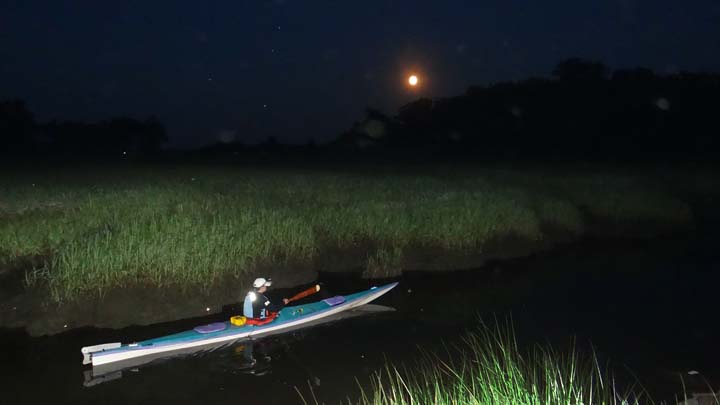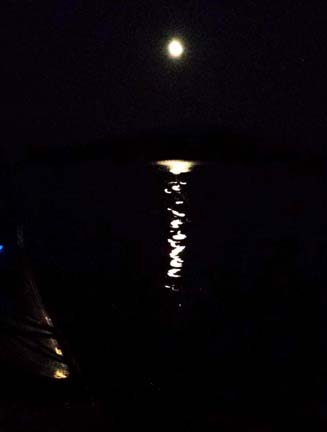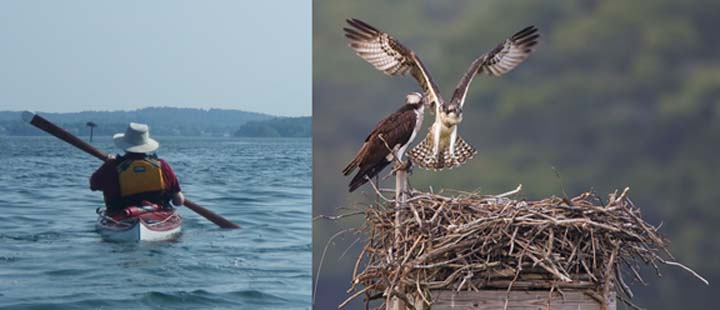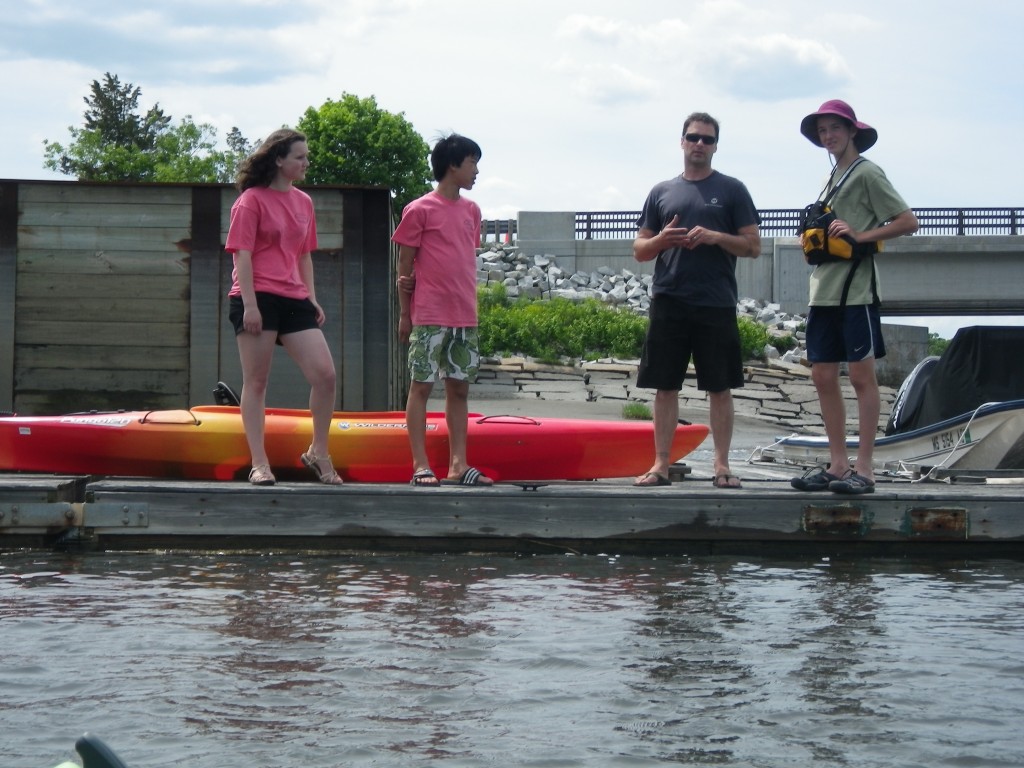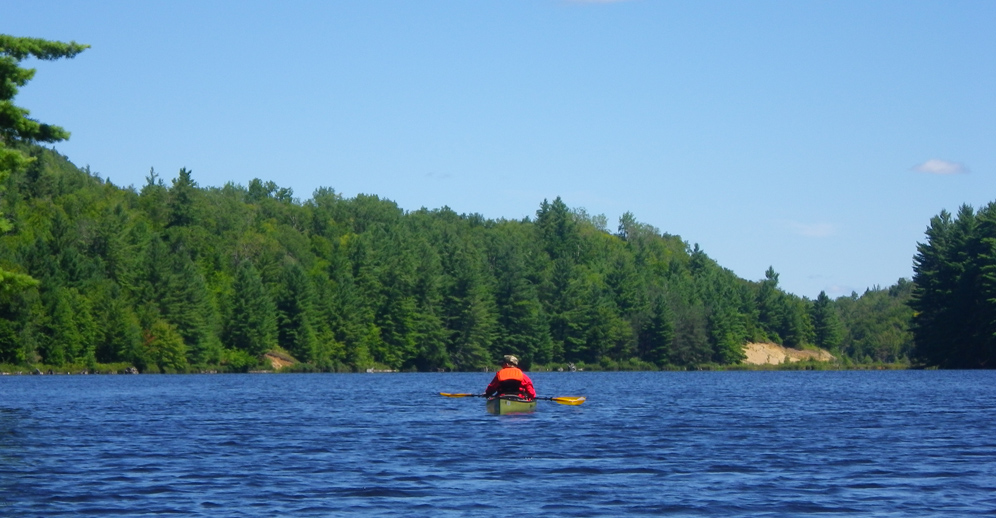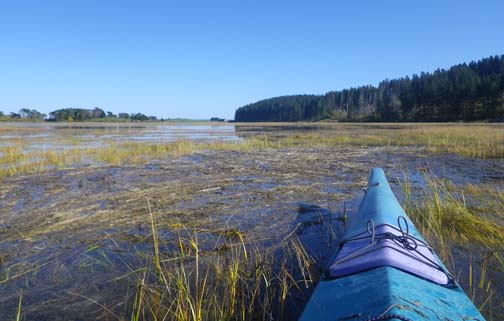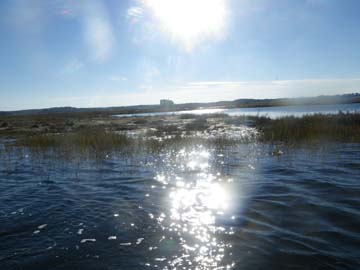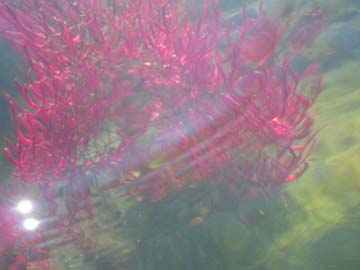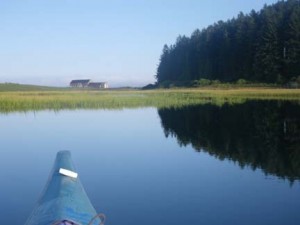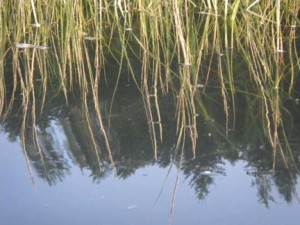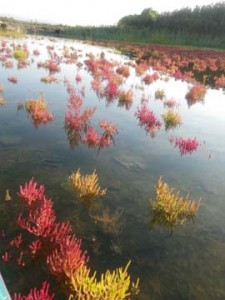Sumer is icumen in,
Lhude sing, cuccu;
Groweth sed and bloweth med,
And springth the wode nu;
Sing, cuccu!
The sumer is icumen in at last, after a rather poor spring. Tammy and I went down to the beach at the end of the road late yesterday to de-tick in the frigid water after a ten-mile ramble in the woods and found the cars backed 30 deep still waiting to get in. the sand was so crowded that it was hard to find a place to drop our towels. Off the coast, stink-pots (a.k.a. motor boats) and the obnoxiously noisy and insanely driven personal watercraft careened back and forth. It’s that time of year again, when the peace of ocean, lake, and river is shattered by the endless roar of inadequately muffled motors, and the paddle enthusiast fears for his or her life as fleets of unseeing, unaware, and even intoxicated drivers take to the water.
Okay, so I am prejudiced against motor craft. This (with the sobriquet “stink-pot”) dates back to my childhood as a committed sailor. I could appreciate their usefulness as utility boats to service the needs of true sailors (travel to and from the yacht club where my sailing camp was, or towing to a race venue, for instance), but what kind of yahoo would choose a motor boat over a sail- or muscle-powered craft for recreational purposes?
Whenever the air is made hideous by the cacophony of a myriad of throbbing engines, my thoughts turn with longing to the times and places when I have been able to paddle for hours or days in the silence of nature, which is no silence at all, but is the sound of the wild without an engine within hearing,
I remember long paddles along rocky coasts with the wind whistling and surf crashing against the cliffs. A spring morning on the St. John River in Maine, with the forest wall echoing with birds calling so fervently their songs of passion and possession that the sounds of the river and our paddles in the water were completely drowned out. A mid-summer early morning on the Hudson in upstate New York, a long, forest-girdled deadwater, glassy in the still morning air, with the only sound the faint ripple of my kayak’s bow as it sliced cleanly through the still water, and the muffled plash of the paddle stroke. Winding through narrow mangrove alleys in Florida’s Everglades, hunting for alligators and gazing at the prehistoric, scaly beasts warming themselves on the occasional muddy bank, paddling under pendant epiphytes, their odd, spiky blossoms punctuating the solid greens with color. A tiny sound of clicking as a sandy bank, pocked with holes, explodes into hundreds of fiddler crabs saluting us with their over-sized claws as we drift past.
These memories, plus a taste for old tales of travel and how-to camping books of 1940 and earlier, always lead to romantic fantasies of what it would be like if North America could be returned to its state before the Euro-invasion starting in the 15th century. I won’t say a state of nature, because much of the area was actually managed by the locals, but the mark they made on the landscape was less obviously destructive than that which was to come.
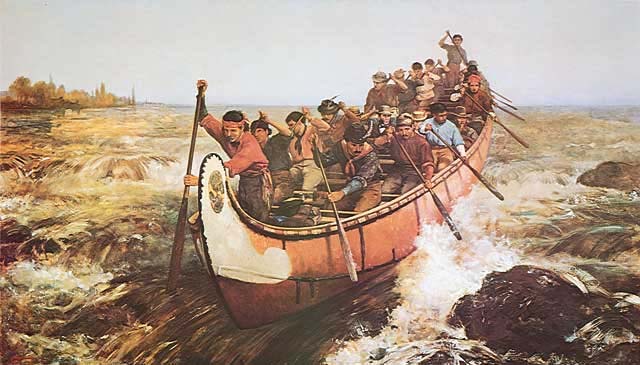 I would, of course, not really want to paddle the forests of America in the 15th century. Lacking movies, smartphones, video games, and other electronic pastimes, the young men would amuse themselves with inter-tribal warfare, bringing home any prisoners to be adopted or excruciatingly done to death, depending on the day of the week or the general desire for some group entertainment.
I would, of course, not really want to paddle the forests of America in the 15th century. Lacking movies, smartphones, video games, and other electronic pastimes, the young men would amuse themselves with inter-tribal warfare, bringing home any prisoners to be adopted or excruciatingly done to death, depending on the day of the week or the general desire for some group entertainment.
I have often thought the ideal world for me would be pre-Euro America, with some modern conveniences, including doctors, a good supply of books, and a few convenient super markets in case I got tired of venison and succotash. One would need to have a modern forager’s knowledge, plus a plot of garden to grow corn, beans and squashes. Heck, since this is a fantasy, we’ll include carrots, potatoes, and a number of fruits and vegetables. The paddling, at least, would be fabulous.
Feeding oneself in this perfect world would not be much of a problem, as game abounded to a degree that we can hardly imagine. Lobsters the size of golden retrievers crawled about the inshore, although we would have to forgo lemons. Paddling them up from the tropics might be a logistical problem.
So, where to paddle? This is our dream voyage, after all. We could paddle south, with a long portage across Cape Cod, then along the coasts of Rhode Island and Connecticut, into the Harlem River. Crossing to the Hudson, we move north. We want to see the Great Lakes, so we have to decide on whether to go up the Mohawk or to continue north until we can cross over to Lakes George and Champlain, then down the Richelieu River into the St. Lawrence. On either track, we could hop over a few miles to wander around the Adirondack lakes for a few weeks, Of course, we could have gotten to the St. Lawrence with a long paddle Down East and around the Gaspé Peninsula. Lots of beautiful, pristine islands to camp on , and no worries about access. Up the St. Lawrence and spend a couple of years exploring the lakes, then south via the Mississippi to the Gulf of Mexico. From here, we turn east to travel down the Florida coast, gunkholing all the way through the waters described so feelingly by Robb White in How to Build a Tin Canoe. After some time revisiting the mangrove coast of the Everglades and the Keys, we move back north and west to take in the Texas beaches, continuing along the Gulf coast to Mexico and Central America, where we can visit the native civilizations in their fabulous, pre-Conquest glory. Remember, this is a fantasy journey, so we don’t have to worry about having our hearts ripped out to feed the Sky Gods, or having our skin end up as some priest’s pyjamas. The warrior classes in this world are more like Mardi Gras dance krewes: still gorgeously dressed, but not killing you on sight.
Surfeited with jungle and dishes cooked in chocolate, we turn north once more for the long paddle back to our hilltop wigwam in Ipswich and the end of our fantasy paddle.
